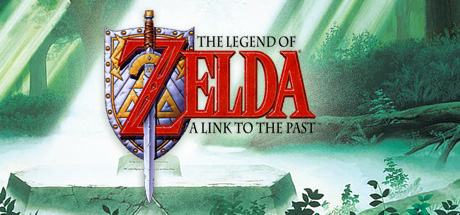As I sit in my dorm, huddled under a blanket, a wave of nostalgia washes over me and I immediately am transported back to my youth. In my hands is my Switch, currently running an emulated version of A Link to the Past, yet I feel just as I did with my original DS, staying up late (and hiding from my parents) to enjoy a game for just a bit longer. This was a feeling I continued to have throughout my experience with A Link to the Past, as it implemented some timeless mechanics and loveable visuals that interrelated with my established knowledge with games in the Zelda franchise,
Originally published by Nintendo for the Super Nintendo Entertainment System (SNES), The Legend of Zelda: A Link to the Past serves as the third game within the series. It was released in 1991 in Japan and 1992 in North America and Europe, and it truly withstands the test of time to continuously provide a provocative, ongoing, and timeless player experience. Many of the iconic mechanics, enemies, and themes found in current Zelda games today were cemented in the legacy that was A Link to the Past, and I would like to address the characteristic game design that transformed the genre of adventure games.
I have only played a few Zelda games, namely Breath of the Wild (which stands as one of my favorite games) and Links Awakening, both of which were published for the Nintendo Switch, but the latter of the two being a remake of its original 1993 version. Yet, there was an innate sense of familiarity that I found when playing A Link to the Past, it was if I could intuitively approach the game based on my past experience with other games within the franchise, and then apply that knowledge to then help me discover a meaningful game experience. This intuition was built off of the staples that designers chose to place within ALttP, from the core game mechanics to the characteristic art style, despite the separation of games I never felt a sense of disjointment.
One of the things that first caught my attention was your ability to name the player character. This was not a mechanic implemented within the later games I had experienced, now seeming to redefine how I approached this game narratively. Within this, I had a player associated directly with myself. Once I began playing, there were notable influences within the game that I believed to serve as the beginning of a new stylistic transition, incorporating common themes within media and the restrictions of the SNES. Colors were brighter, themes were pluckier, anddevs took particular attention to crafting a delicate sound experience. Sound mechanics were now integral within the game, as enemies could hear and track you rather than move on a predetermined path. This new movement mechanic opened up a variety of avenues for narrative, as now mobs were granted a more lifelike, and in it a more terrifying, presence.
Yet, despite the stylistic and characteristic changes that established ALttP as a landmark within the Zelda franchise, I was most struck by the robust enemy mechanics, the level design, and the intricate puzzles that asked the player to navigate between. Within the game, players are asked to navigate a variety of dungeons that boast many colorful, terrifying enemies. The beauty of this game is that it asks you to learn as you fail, forcing you to try new combinations of mechanics and abilities offered to progress further within the story. Early on in the game, you are asked to enter The Eastern Palace to begin your quest for the Master Sword, but the palace layout is designed in a way that feels flowing and expansive. You traverse through a multitude of rooms, some of which you can run through, and others where you are forced to stand and fight. That forced challenge created within the game asks players to experiment, and ultimately, fail. Yet, as you fail the map actually opens up, only taking mere seconds to return to where you once were and resume your journey onwards.
So, how does this condition of failure then play into ongoing games? The mechanic is necessary for Zelda, and I can say with confidence that many players of the games are familiar with the signature “Game Over” logo that flashes across the screen. This sense of failure is what helps the game resonate with audiences, asking them to fail in order to gain more knowledge, persevere, and eventually continue to the next stage. Making failure integral to the franchise is what makes it so appealing. As I run out of words, I simply want to say, I highly recommend you play The Legend of Zelda: A Link to the Past, as you will truly find yourself immersed within a narrative masterpiece that feels mechanically, visually, and emotionally nostalgic.

